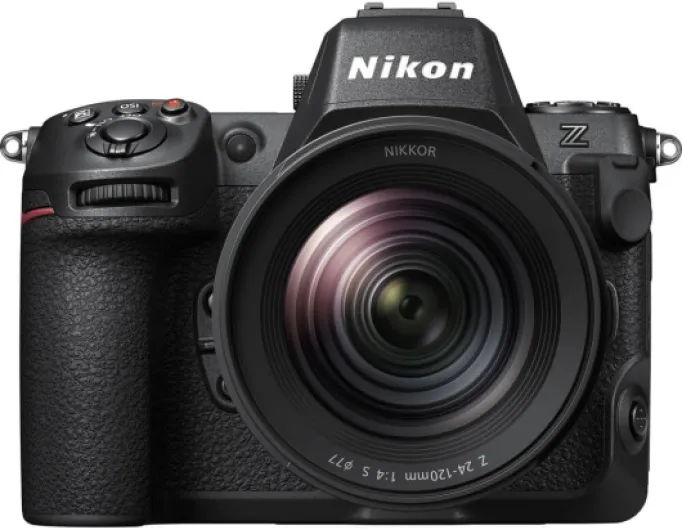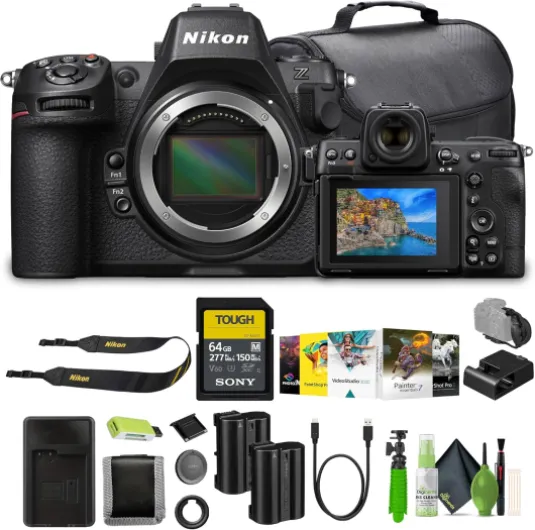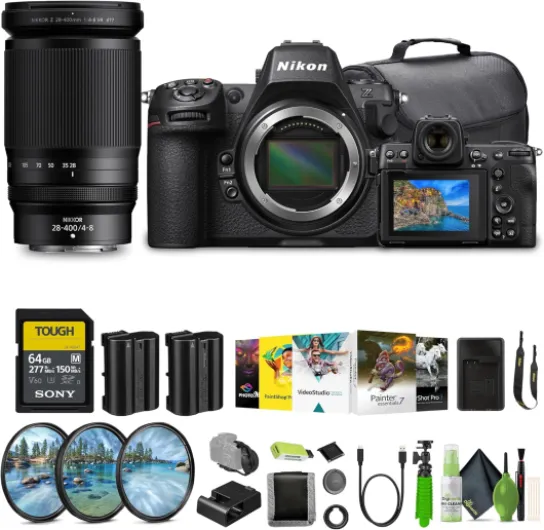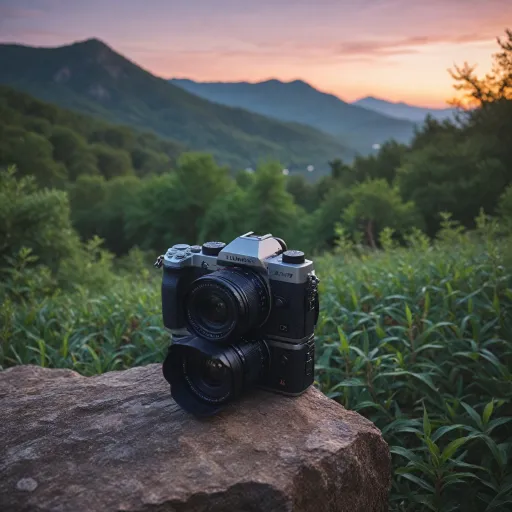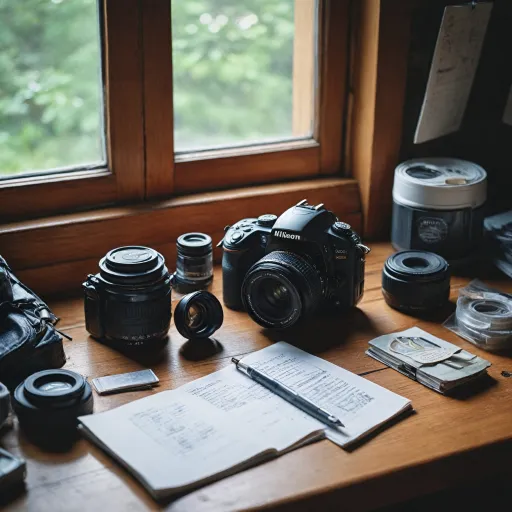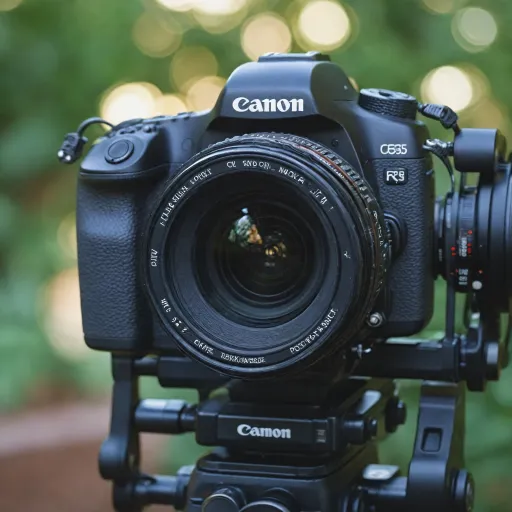
What is focus shift and why does it matter with flash?
Why Focus Shift Happens When Using Flash
Focus shift is a phenomenon that can affect the sharpness of your images, especially when shooting with flash on advanced cameras like the Nikon Z8. In simple terms, focus shift occurs when the point of sharpest focus moves after the camera has locked focus and before the actual exposure is made. This is particularly important in photography with flash, where the timing between autofocus, exposure, and the flash firing can introduce subtle changes in focus position.
When using the Nikon Z8, the camera's autofocus system works to lock onto your subject before the shot. However, after focus is achieved and just before the flash fires, the lens elements may shift slightly due to aperture changes or the way the camera manages exposure. This can result in the final image being less sharp than expected, even if the focus confirmation was achieved. The issue is more noticeable with fast lenses, wide apertures, or when using focus stacking and step width adjustments in the shooting menu.
- Focus step and step width: These settings in the Nikon Z8 allow you to control how much the focus position changes between shots, which is crucial for focus stacking and interval shooting. Incorrect settings can increase the risk of focus shift, especially with flash photography.
- Depth of field: A shallow depth of field makes focus shift more apparent, as even a small movement in focus distance can take your subject out of the sharpest zone.
- Frame exposure and exposure lock: The timing of the flash and the camera's exposure lock can interact with focus shift, especially in silent photography or when using interval shots.
Understanding how focus shift interacts with your camera's settings is essential for getting sharp images, particularly when using flash. The Nikon Z8 offers a range of options in the shooting menu to help manage focus shift, but knowing when and why it happens is the first step to controlling it. For a broader perspective on how Nikon cameras handle focus and flash, you can read more in this in-depth look at Nikon's 35mm cameras.
How the Nikon Z8 manages autofocus with flash
How autofocus interacts with flash on the Nikon Z8
The Nikon Z8 uses advanced autofocus (AF) systems that are designed to work seamlessly with flash photography. When you attach a flash and start shooting, the camera calculates focus based on the available light, the selected focus position, and the lens characteristics. However, using flash can introduce a focus shift, especially in low-light or high-contrast scenes. This is because the camera may lock focus before the flash fires, and the burst of light can slightly change the perceived focus distance.
Key menu settings for managing focus shift
Within the shooting menu, the Nikon Z8 offers several settings that help control focus shift during flash photography. Photographers can adjust the focus step width, number of shots, and interval between shots when using focus stacking or focus shift shooting. These settings are crucial when you want to maintain sharpness across multiple frames or when stacking images for greater depth of field.
- Focus step width: Determines how much the focus position changes between each shot. A smaller step width can help reduce focus shift, especially with macro or close-up shots.
- Number of shots: Sets how many images the camera will capture in a sequence. More shots allow for finer adjustments in focus stacking.
- Interval between shots: Controls the time between each frame exposure, which can be important when using flash to allow for recycling time and prevent exposure inconsistencies.
Practical tips for reliable autofocus with flash
To get the most accurate focus with flash on the Nikon Z8, consider these practical steps:
- Use exposure lock to maintain consistent lighting between shots.
- Enable silent photography only if your flash supports it, as some flashes may not sync correctly in silent mode.
- Check your focus distance and depth of field before shooting, especially when stacking images.
- Review your shots after each interval to ensure the focus shift is minimal and the images are sharp.
For photographers interested in how the Nikon Z8 compares to other models, especially in terms of flash focus accuracy and versatility, you may find this resource on the versatility of Nikon's 35mm cameras helpful.
Common situations where focus shift occurs
When Focus Shift with Flash Becomes Noticeable
Focus shift is a subtle yet impactful issue in photography with the Nikon Z8, especially when using flash. It often appears in specific shooting scenarios, and understanding these can help you anticipate and minimize its effects.
- Low Light and Narrow Depth of Field: When shooting in dim environments, the camera may struggle to lock precise focus. Using a wide aperture (small f-number) reduces depth of field, making any shift in focus position more obvious in the final image.
- Focus Stacking and Macro Photography: If you use focus stacking, where the camera takes multiple shots at different focus distances, even a slight shift can disrupt the stacking process. The Nikon Z8’s focus shift shooting menu allows you to set the focus step width and number of shots, but flash timing can introduce inconsistencies between frames.
- Interval Shooting with Flash: When capturing a series of images at set intervals, such as for time-lapse or bracketed exposures, the flash recycle time can cause variations in exposure and focus. This is especially true if you use silent photography or exposure lock, as the camera’s autofocus system may behave differently between shots.
- Fast Action and Moving Subjects: In situations where subjects move quickly, the combination of flash and autofocus can sometimes result in the camera missing the intended focus point, leading to a noticeable shift in sharpness across frames.
Settings like focus step width, interval shot timing, and the number of shots in a stack all play a role in how pronounced focus shift will be. Adjusting these in the shooting menu can help, but it’s important to test your setup in real-world conditions.
For those interested in optimizing their workflow across different camera systems, exploring conversion LUTs for the Fuji XT5 can offer insights into managing color and exposure consistency, which is also relevant when dealing with focus shift and flash in Nikon cameras.
Settings and techniques to reduce focus shift
Optimizing Your Nikon Z8 Settings for Reliable Flash Focus
Reducing focus shift when using flash with the Nikon Z8 involves a mix of camera settings, technique, and understanding how autofocus interacts with flash exposure. Here are practical steps and settings to help minimize focus shift and improve your results in challenging lighting situations.
- Use the Right Focus Mode: For flash photography, single-point AF or pinpoint AF often delivers more consistent focus than wide-area modes. This helps the camera lock onto your subject with greater precision, especially in low light.
- Check Focus Step Width and Number: In the focus shift shooting menu, adjusting the focus step width and number of shots is crucial for focus stacking. A smaller step width means finer adjustments between shots, which can help maintain sharpness across the frame. However, too small a step can increase the total number of shots needed.
- Interval Between Shots: When using focus stacking with flash, set an appropriate interval between shots to allow the flash to recycle. This prevents underexposed frames and ensures each image is properly lit.
- Disable Silent Photography: The Z8’s silent photography mode can sometimes interfere with flash timing. For consistent flash exposure and focus, turn off silent photography in the shooting menu.
- Exposure Lock and Frame Exposure: Use AE-L (Auto Exposure Lock) to lock exposure settings before shooting a sequence. This keeps exposure consistent across all frames, which is especially important for focus stacking with flash.
- Manual Focus for Critical Shots: For scenes where autofocus may struggle, switch to manual focus. Set your focus position carefully and use magnified live view to check critical sharpness before triggering the flash.
- Depth of Field Considerations: A smaller aperture (higher f-number) increases depth of field, making minor focus shifts less noticeable. However, balance this with your flash power and desired background blur.
- Use Reliable Flash Units: Consistent flash output is key. Inconsistent flash can cause exposure variations that make focus shift more apparent. Test your flash and batteries before important shoots.
Practical Workflow for Focus Stacking with Flash
When stacking images with the Nikon Z8, especially in macro or product photography, follow this workflow:
- Set the focus shift shooting option in the shooting menu.
- Choose the focus step width based on subject depth and desired sharpness.
- Determine the number of shots needed to cover the focus range.
- Set an interval that allows your flash to recharge between shots.
- Lock exposure and white balance for consistency across all frames.
- After shooting, use stacking software to combine the images for maximum depth of field.
By carefully adjusting these settings and understanding how each impacts focus shift with flash, photographers can achieve sharper, more consistent results with the Nikon Z8. Experimenting with different combinations will help you find the optimal workflow for your specific photography with flash and focus stacking needs.
Comparing the Nikon Z8 to other cameras for flash focus accuracy
How the Z8’s Flash Focus Compares to Other Cameras
Photographers often want to know how the Nikon Z8 performs with flash focus shift compared to other camera models. This is especially important for those who rely on precise focus stacking, interval shooting, or advanced flash photography with multiple shots per frame.- Autofocus and Focus Shift: The Z8 uses advanced autofocus algorithms that help minimize focus shift during flash photography. However, some cameras in the same class, such as the Canon EOS R5 or Sony A7R V, also offer robust focus management. The difference often comes down to how each camera handles focus position and exposure lock when a flash is triggered.
- Focus Stacking Features: With Nikon, the Z8’s focus shift shooting menu allows you to set the focus step width, number of shots, and interval between shots. This is similar to what you’ll find in other high-end mirrorless cameras, but the Z8’s menu is particularly intuitive for adjusting step width and focus distance. Some competitors may offer more automation or software integration for stacking images, but the Z8’s in-camera options are comprehensive.
- Silent Photography and Flash: Not all cameras handle silent photography with flash equally well. The Z8 maintains reliable focus even when silent mode is enabled, though some users report that certain settings can impact focus accuracy with flash. Other brands may limit flash use in silent modes, affecting workflow for event or macro photography with flash.
- Frame Exposure and Interval Shooting: The Z8’s interval shot and frame exposure settings are flexible, letting you fine-tune how the camera manages focus shift shooting. This is especially useful for stacking or bracketing shots with flash. Some cameras may require external software or more manual steps to achieve similar results.
| Camera | Focus Shift Shooting | Flash Focus Accuracy | Menu Customization |
|---|---|---|---|
| Nikon Z8 | Yes (in-camera, detailed settings) | High, with some reported shift in specific scenarios | Extensive (step width, number shots, interval) |
| Canon EOS R5 | Yes (in-camera, less granular) | High, but may require firmware updates | Moderate |
| Sony A7R V | Yes (in-camera, software support) | Very high, especially with native flashes | Good, but some settings are less accessible |
Troubleshooting and solutions for persistent focus shift issues
Steps to Diagnose Persistent Focus Shift
If you’re still experiencing focus shift with flash on your Nikon Z8, even after adjusting settings and techniques, it’s important to systematically troubleshoot the issue. Here’s a step-by-step approach:- Check Focus Shift Shooting Settings: In the shooting menu, verify your focus shift shooting parameters. Pay attention to the focus step width, number of shots, and interval between shots. Incorrect step width or interval shot settings can cause the camera to miss the intended focus position, especially with flash photography.
- Review Focus Stacking Results: If you’re using focus stacking, examine the stacked images for inconsistencies in sharpness. Uneven depth of field across the frame may indicate a mismatch between focus step and depth field, or issues with flash exposure timing.
- Test Without Flash: Try shooting the same scene without flash. If focus shift disappears, the issue may be related to flash sync or exposure lock settings. Adjust the frame exposure and flash sync options in the menu to see if this resolves the problem.
- Evaluate Lens Compatibility: Some lenses may exhibit more pronounced focus shift, especially at wide apertures. Test with another lens if possible to determine if the issue is lens-specific.
- Disable Silent Photography: Silent photography mode can sometimes interfere with flash timing and focus accuracy. Turn off silent photography to see if focus shift improves during flash shots.
- Update Camera Firmware: Ensure your Nikon Z8 has the latest firmware. Manufacturers often release updates to improve autofocus and flash compatibility.
Advanced Solutions and Software Tools
If the above steps do not resolve the issue, consider these additional solutions:- Manual Focus Adjustment: For critical shots, use manual focus or fine-tune autofocus with live view. This allows precise control over focus distance and depth field, especially in challenging lighting.
- Third-Party Software: Use focus stacking software to align and blend images more accurately. Some software tools can compensate for minor focus shift between frames, improving the final stacked image.
- Custom Shooting Intervals: Adjust the interval shot timing to ensure the flash has fully recycled before each frame. Insufficient interval can cause exposure inconsistencies and affect focus accuracy.
When to Seek Professional Support
If persistent focus shift remains after all troubleshooting steps, it may indicate a hardware issue with the camera or lens. In this case:- Contact Nikon support or visit an authorized service center for a thorough inspection.
- Document your settings, sample images, and the steps you’ve taken. This information will help technicians diagnose the problem efficiently.
